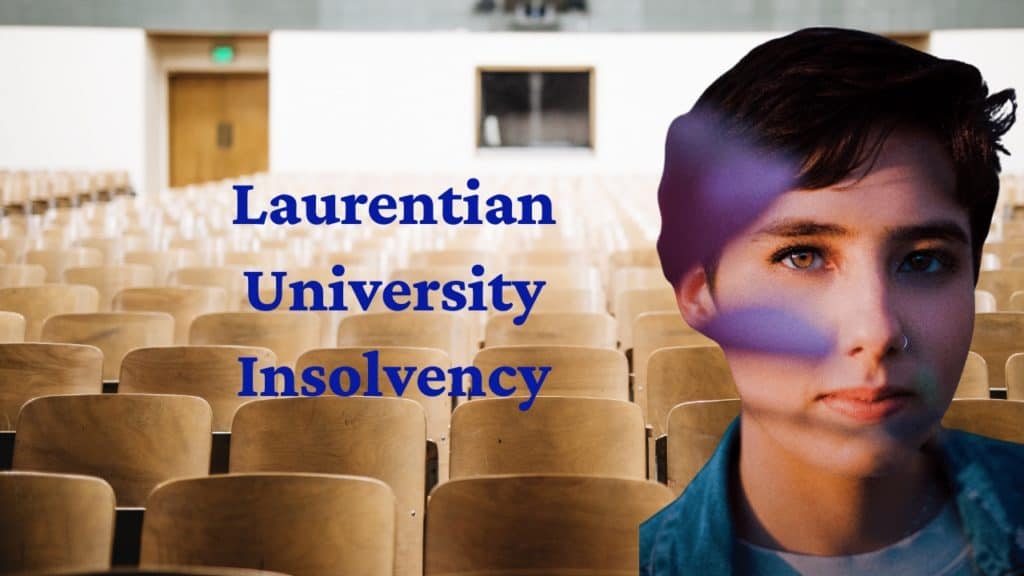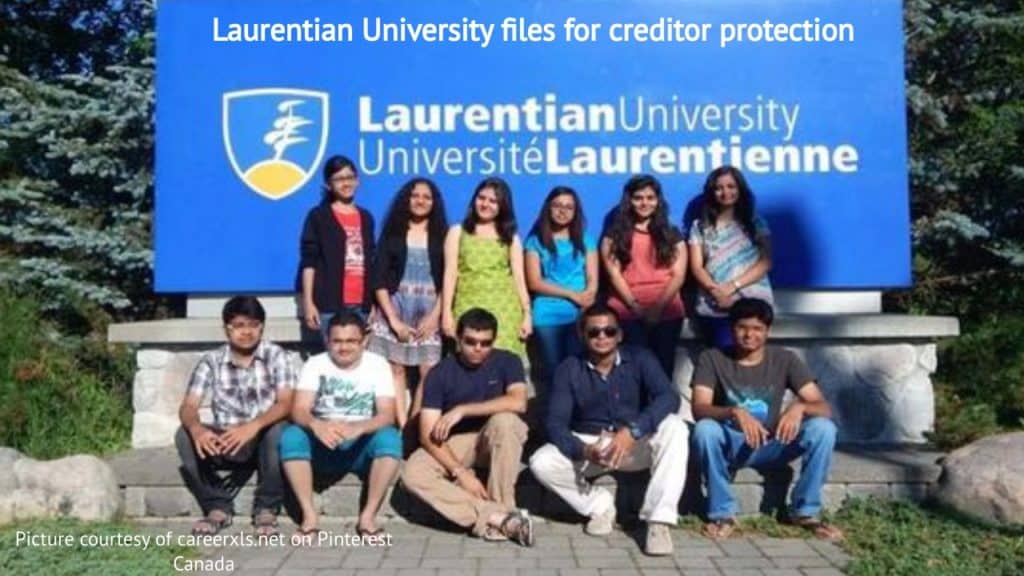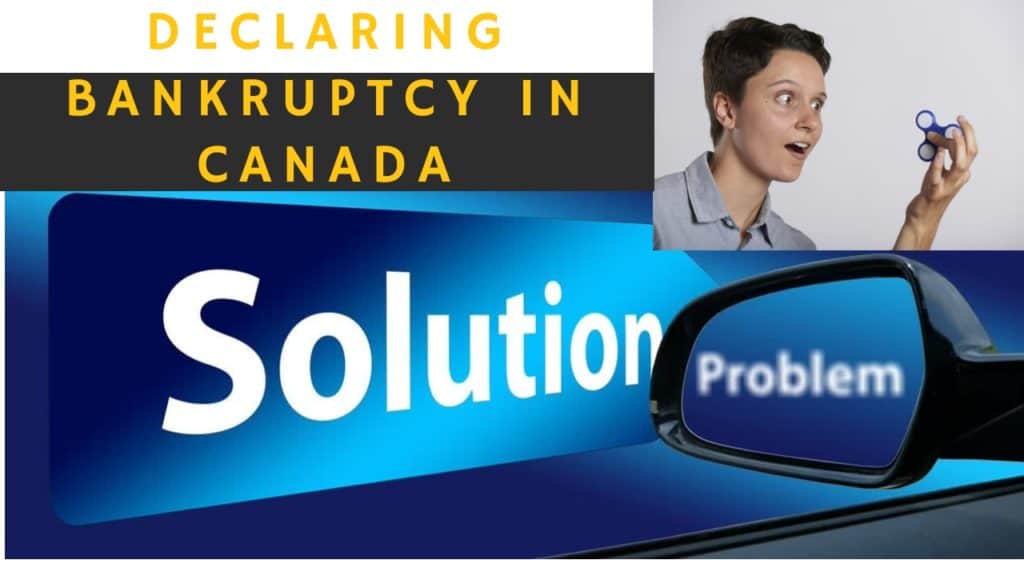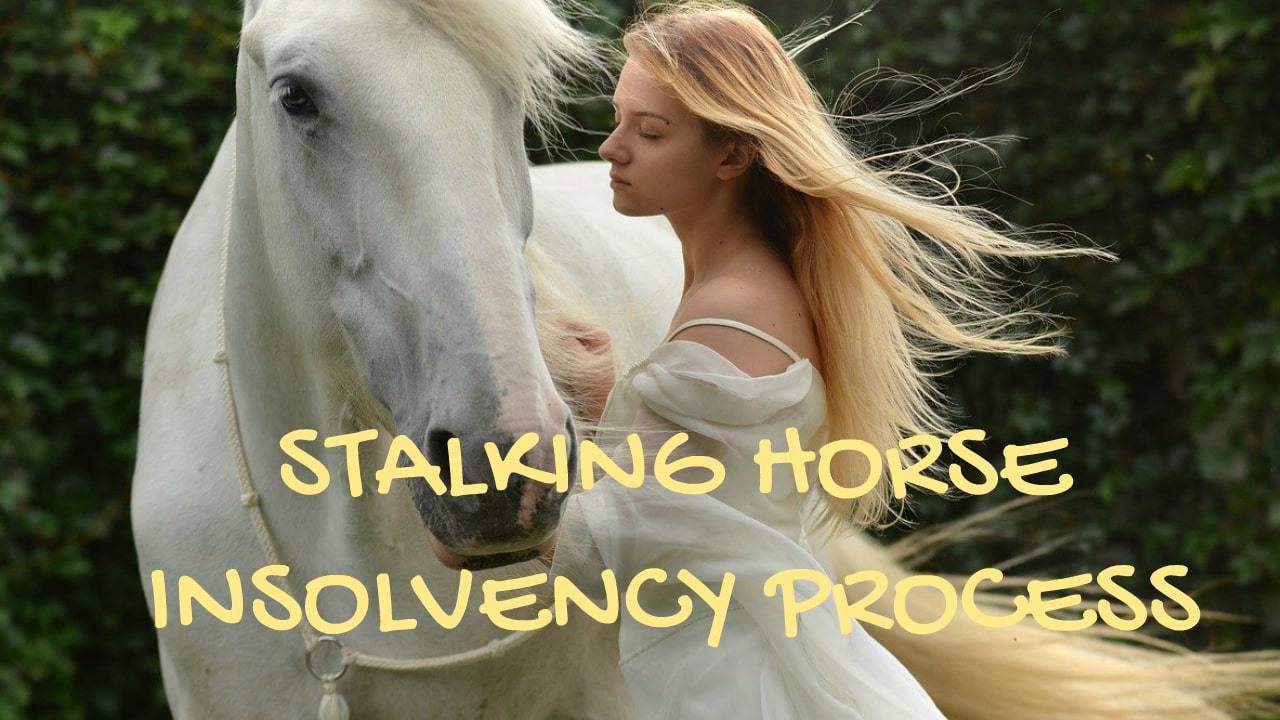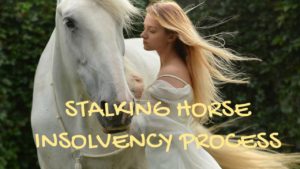We hope that you and your family are safe, healthy and secure during this COVID-19 pandemic. Ira Smith Trustee & Receiver Inc. is absolutely operational and Ira, in addition to Brandon Smith, is readily available for a telephone consultation or video meeting.
laurentian university insolvency
Laurentian University insolvency: Laurentian students, faculty ‘shocked’ at university’s declaration of insolvency
On February 8, 2021, I wrote my blog about the Laurentian University insolvency filing for creditor protection under the Companies’ Creditors Arrangement Act (Canada) (CCAA) on February 1, 2021. It was the very first time in Canada that a public university took such creditor protection action. That blog is titled: Laurentian University Facing Insolvency Makes Startling CCAA News By Filing For Creditor Protection.
Post-secondary education can be a hard path for lots of young Canadians. The road can be filled with challenging experiences. Nevertheless, students never thought that having their college or university teeter on the edge of bankruptcy while they’re still going there would be a reality they would need to face! “It was a surprise,” declares one third-year Laurentian University student, resembling the views of her peers.
The students found out about the Laurentian University insolvency when they logged into their student portal. That is when they found out that the school has declared itself insolvent. The University President and Vice-Chancellor stated in the CCAA proceedings that the university’s dire financial situation financial issues were first determined as early as 2008-09 when a prior administration.
The students who were accepted to the school on the understanding that the school would continue operating and that their field of study would not be in danger surely feel betrayed by this. What a stressful time for them.
Everyone was pretty shocked when we found out that the Laurentian University insolvency CCAA filing happened. Nobody had really focussed before on the fact that public institutions like Laurentian would become insolvent and then be eligible for a CCAA process.
What went wrong in this Sudbury, Ontario-based university? In this Brandon Blog, I’m going to give you an update to my February 8, 2021, Brandon Blog and what has gone on since then in this Laurentian University insolvency process.
Laurentian University insolvency: Is Laurentian University closing?
No. The purpose of the CCAA filing is to allow Laurentian University to restructure so that hopefully it will remain open for a long time to come. Laurentian has continued operating. Courses are continuing (virtually because of the COVID-19 pandemic).
Laurentian opened up discussions with its different stakeholders, including its students, faculty, other staff, trade suppliers, research-granting agencies and donors immediately after the issuance of the court order approving the Laurentian University insolvency filing.
Laurentian has to negotiate functional modifications in order to drive go-forward financial savings. Consequently, these conversations have included settlement negotiations between Laurentian and the:
- Committee of representatives chosen by the Senate, to deal with the course offering to restructure.
- Federated Universities;
- Laurentian University Faculty Association, the bargaining unit representing the professors; and
- Laurentian University Staff Union, the bargaining unit for non-faculty personnel.
Unions at Laurentian University lose fight to unseal documents related to insolvency process
Upon the initial CCAA filing, the Laurentian University insolvency application included a request for a sealing order to keep away from public viewing two Exhibits. Laurentian’s position was that stakeholders should not be able to see those documents as it would weaken and perhaps totally frustrate Laurentian’s ability to restructure. The court granted the sealing order.
On March 4, 2021, the Ontario Confederation of University Associations, the faculty union and the Canadian Union of Public Employees served notices looking for leave to appeal the sealing order from the Court of Appeal for Ontario. On March 31, 2021, the Court of Appeal for Ontario issued its decision dismissing the motion for leave to appeal.
Laurentian University cuts 100 professors, dozens of programs
Laurentian University told the court that it had many programs relative to its number of pupils. Since the day of the CCAA declaration, Laurentian had roughly 209 different programs – 166 undergraduate programs as well as 43 programs for graduate students. Laurentian additionally advised that a lot of programs have continually reducing enrolment and are not financially sustainable.
The university undertook an evaluation of low-enrollment programs and a review of the variety of courses to be provided moving forward. This procedure led to a full review of programs as well as potential program closures. The results of this analysis led to recommendations for academic program restructuring. The recommendations were accepted by the Senate Sub-Committee charged with completing this review and also the complete Senate.
The program closures consist of 38 English-language undergraduate programs and 27 French-language undergraduate programs. This represents 39% of the undergraduate programs offered as of February 1, 2021. This will affect about 772 undergraduate students (557 in English language programs and 215 in French-language programs). In addition, Laurentian proposes to close 11 graduate programs (4 in French; 7 in English).
If programs are being cut, then it stands to reason that teaching costs and other staff costs also need to be reduced. At the commencement of the CCAA proceedings, approximately 612 employees were represented by LUFA including 355 full-time faculty, many of whom had tenure pursuant to the collective agreement, 252 sessional faculty or health care professionals and 5 full-time counsellors.
The faculty and the Laurentian Board are parties to a collective agreement with a three-year term which expired on June 30, 2020. Pursuant to the provisions of the agreement, it automatically continues year-to-year unless notice is provided that either the union or university intends to terminate or amend it. In February 2020, the union provided the Laurentian Board with a notice to bargain. The agreement automatically remains in force during any period of negotiation.
On April 7, 2021, after participating in insolvency negotiations and mediation, the parties entered into a new labour agreement term sheet. Since academic programs were cut, faculty cuts had to follow. The term sheet calls for a new collective agreement with a five-year term expiring on June 30, 2025. It declares 116 full-time faculty positions and 1 counsellor position redundant.
The faculty downsizing will be achieved through voluntary resignations and termination of employment. Faculty to be terminated, who is currently teaching, will be terminated effective May 15, 2021. Those faculty who were not teaching in the current term were terminated effective April 30, 2021. There are also some other salary decreases across the board and benefits reductions for continuing faculty.
As far as other unionized staff (non-faculty), there will be 42 job losses. For the remaining non-teaching staff, there will be certain salary and benefits adjustments. For non-union staff, there is some salary rollback and loss of certain benefits.
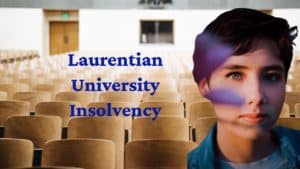
Laurentian University insolvency: Court ruling allows Laurentian University to reduce value of pension plan payouts
The institution oversees three pension and benefit plans: (a) a registered defined benefit pension plan (DBP); (b) a supplementary unfunded retirement plan (SURP) and (c) a retirement health benefits plan (RHBP). The SURP, as well as RHBP, are currently unfunded. Repayments pursuant to the SURP and RHBP have remained stayed, in conformity with the terms of the CCAA Order.
The DBP is a plan registered with the Financial Services Regulatory Authority of Ontario under the Ontario Pension Benefits Act as well as the Income Tax Act (Canada). The DBP has a going-concern pension deficit of roughly $4.5 million. The University needs to deal with the going-concern shortage. Under provincial government regulations, it needs to do so within a 10-year duration.
Terminated personnel that are DBP members, need to think about whether they want to move their pension plan entitlement to a different trustee due to the fact that they are not qualified to receive their pension payments yet. Alternatively, they could maintain their pension with Laurentian University as trustees. For retiring or terminated staff, depending on their situation, they must elect either an immediate pension plan payment or a deferred pension.
On March 17, 2021, the court made an order specifying, amongst other things, that for any kind of DBP participant that wanted to transfer their pension plan, a transfer proportion of 65.8% will be used for any commuted value transfer request for anyone that received a retirement or termination statement and an election form, for whom such transfers had not yet been made.
Therefore, anyone making such an election lost 34.2% of what they believed their pension entitlement was going to be. Various other amendments to the DBP are also proposed to take place in the Laurentian University insolvency matter. As you can imagine, the further amendments are aimed at creating long-term solvency for the DBP. Therefore, it involves certain reductions to what the remaining members thought they bargained and signed up for!
As part of the restructuring, the Laurentian University insolvency process also proposes that the RHBP will be terminated. Any claims against the SERP will be dealt with in the CCAA proceedings.
The SURP was implemented on July 1, 2002, to supply additional retirement benefits to Laurentian staff members who were in the DBP, to get additional benefits for those earning income over a certain limit. Retiring employees that qualified for the SURP were automatically enrolled. They received either a yearly or monthly payment from the SURP. All of the SURP commitments are unfunded. Historically, the university made annual payments in respect of the SURP from existing operating funds every July.
The insolvency negotiations and mediation have led to the Laurentian University insolvency process recommending that the SURPs be terminated. Accumulated obligations will be managed in the Laurentian University insolvency CCAA Plan of Arrangement. All SURP payments stopped on February 1, 2021, as a result of the CCAA stay of proceedings.
By March 17, 2021, all the changes I have talked about so far were approved by the court.
Judges reject appeals from federated universities, Laurentian insolvency plan can proceed
Laurentian has a federated school structure whereby it has formal affiliations with the Federated Universities: the University of Sudbury, Huntington University and Thorneloe University. Laurentian has a federated institution framework whereby it has official affiliations with the Federated Universities: the University of Sudbury, Huntington University as well as Thorneloe University.
The University of Sudbury is a Roman Catholic multilingual university offering programs in Culture and Communication Studies, Indigenous Studies, Philosophy as well as Religious Studies consisting of courses in both English and French. It was founded in 1913 as Collège du Sacré-Coeur before changing its name to the University of Sudbury in 1957.
Huntington is an independent university founded in 1960 with its own charter and offers programs in Communication Studies, Gerontology, Religious Studies as well as Theology.
Thorneloe is a university with historic origins and association with the Anglican Church of Canada. It offers programs in the departments of Ancient Studies, Religious Studies and also Women’s, Gender as well as Sexuality Studies.
Laurentian and the Federated Universities are connected via a selection of historical connections as well as contractual arrangements. Each of the Federated Universities is a separate legal entity and each is controlled by their own respective board of governors, independent of Laurentian providing oversight of university affairs, respectively.
The Federated Universities do not admit or register their own students and they do not confer their own degrees (with the exception of Theology at Huntington as well as Thorneloe). All Federated University programs and courses are offered by Laurentian University, and all students go to the Laurentian campus. Although the Federated Universities each manage their own respective financial affairs, they cannot receive provincial funding directly. The majority of the public funding for Federated Universities is processed through Laurentian.
As part of the Laurentian University insolvency CCAA restructuring, Laurentian served Notices of Disclaimer on the Federated Universities as it felt it was financially more advantageous for Laurentian to be free from those contractual responsibilities. As a result of the negotiation and mediation process, on April 16, 2021, Laurentian and Huntington entered into an agreement whereby Huntington essentially agreed to cease offering its courses and turn over certain course rights to Laurentian. The only exception allowed in this Laurentian University insolvency process negotiation was that if the court held that the University of Sudbury and Thorneloe University were permitted to continue to receive funding from Laurentian to teach courses or programs, Huntington could also, should it choose to do so.
The University of Sudbury and Thorneloe took a different approach. They each filed motion records in court objecting to the Notices of Disclaimer. The court heard the motions on May 2, 2021, along with Laurentian’s motion to extend the restructuring period and the resulting stay of proceedings to August 31, 2021, and to approve an increase of $10 million to its debtor-in-possession financing.
Laurentian argued that a condition of the increased financing was that the Federated Universities agreements be terminated and that terminating them will improve the University finances. The University of Sudbury and Thorneloe argued that it has not been shown necessary to Laurentian’s future viability and solvency that the Federated Universities relationship had to end and all it really is was an attempt to put them out of business.
Two different judges heard the University of Sudbury and the Thorneloe University motions. Each released their decisions last Sunday night. Each judge dismissed their respective motions. Laurentian’s increased financing and the extension of its restructuring period were also approved. The judges indicated that Reasons would follow. At the time of writing this Brandon Blog, the Reasons have not been released. When they are, I will certainly let you know what the Judges’ thought processes were.

Unprecedented Laurentian University insolvency summary
Seeking to escape a mounting debt problem, the administration of Laurentian University insolvency process has led to its filing for bankruptcy protection under the CCAA statute. This will have unfortunate consequences for some students whose courses of study are no longer offered. It will also have a terrible effect on the roughly 164,000 people who live in Sudbury, many of whom are directly involved in the school.
I hope you enjoyed the Laurentian University insolvency Brandon Blog post. You may be very upset and frustrated over this. You may have been directly affected by the course and employee downsizing. Perhaps your pension has just been cut drastically from what you thought it would eventually be. You may even be downright depressed. No doubt the Sudbury entrepreneurs may be very frustrated whether their businesses will be able to continue to pay all its debts as they come due.
Are you worried because you or your business are dealing with substantial debt challenges and you assume bankruptcy is your only option? Call me. It is not your fault that you remain in this way. You have actually been only shown the old ways to try to deal with financial issues. These old ways do not work anymore.
The Ira Smith Team utilizes new modern-day ways to get you out of your debt difficulties while avoiding bankruptcy. We can get you the relief you need and so deserve.
The tension put upon you is big. We know your discomfort factors. We will check out your entire situation and design a new approach that is as unique as you and your problems; financial and emotional. We will take the weight off of your shoulders and blow away the dark cloud hanging over you. We will design a debt settlement strategy for you. We know that we can help you now.
We understand that people and businesses facing financial issues need a realistic lifeline. There is no “one solution fits all” method with the Ira Smith Team. Not everyone has to file bankruptcy in Canada. The majority of our clients never do. We help many people and companies stay clear of bankruptcy.
That is why we can establish a new restructuring procedure for paying down debt that will be built just for you. It will be as one-of-a-kind as the economic issues and discomfort you are encountering. If any one of these seems familiar to you and you are serious about getting the solution you need, contact the Ira Smith Trustee & Receiver Inc. group today.
Call us now for a no-cost consultation.
We will get you or your business back up driving to healthy and balanced trouble-free operations and get rid of the discomfort factors in your life, Starting Over, Starting Now.
We hope that you and your family are safe, healthy and secure during this COVID-19 pandemic. Ira Smith Trustee & Receiver Inc. is absolutely operational and Ira, in addition to Brandon Smith, is readily available for a telephone consultation or video meeting.
